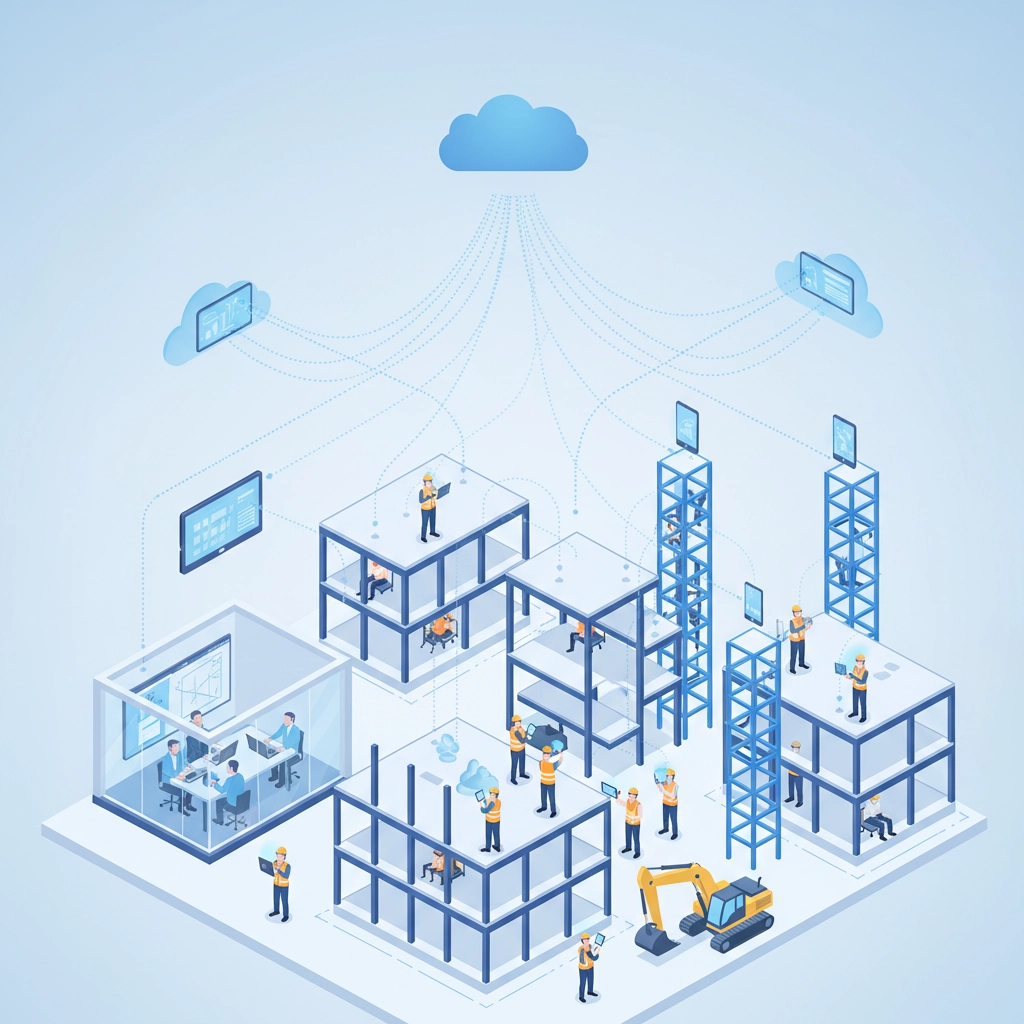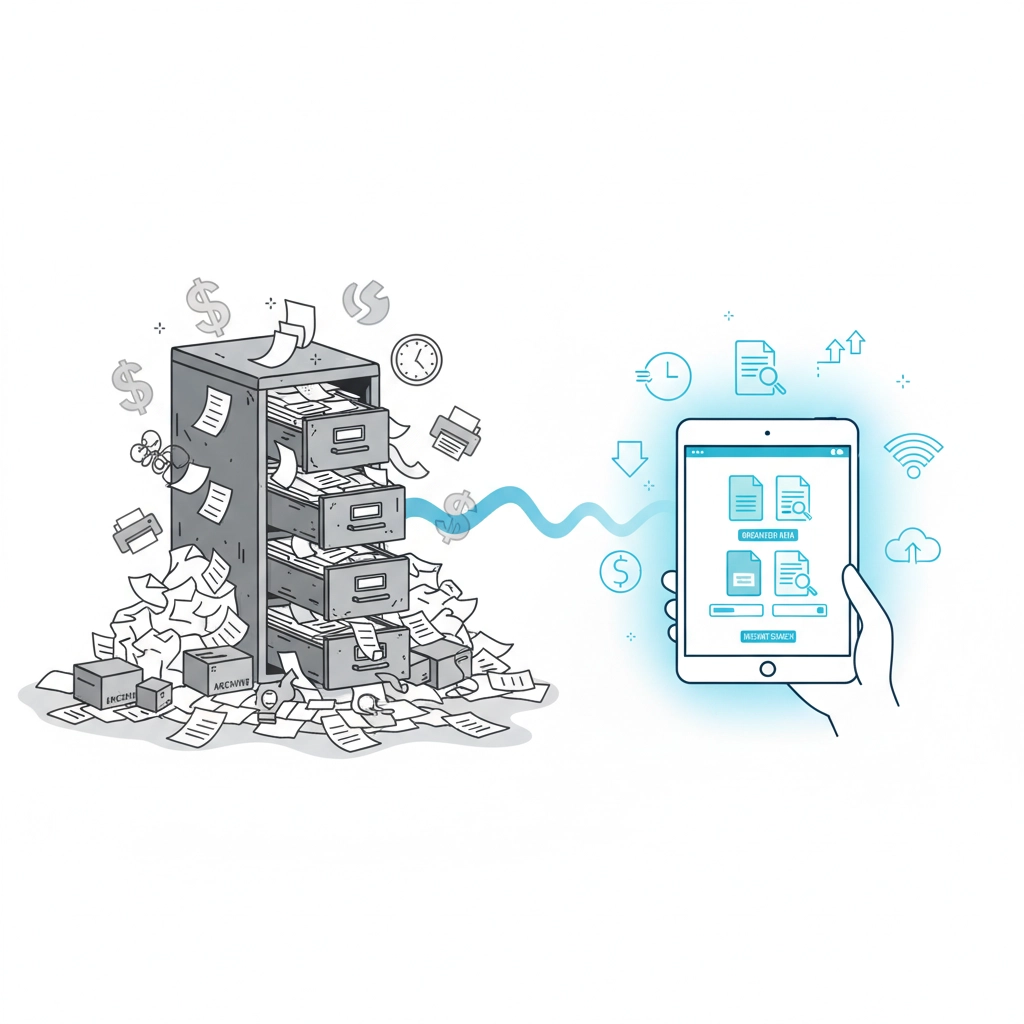Are Paper Forms Dead? Why Digital Documentation Matters In Construction
- Oliver Clayton
- 4 days ago
- 4 min read
Picture this: It's 7 AM on a construction site, and the foreman is frantically searching through a stack of soggy paperwork that got caught in yesterday's downpour. Meanwhile, the safety inspector needs last week's compliance forms, but they're buried somewhere in the site office filing cabinet. Sound familiar?
While paper forms aren't technically "dead" in construction, they're rapidly becoming the industry equivalent of a flip phone: technically functional, but woefully inadequate for modern demands. The real question isn't whether paper forms are dying, but whether your construction business can afford to keep using them.
The Current Reality: Paper's Costly Grip on Construction
Despite living in a digital age, the construction industry has been surprisingly slow to abandon paper-based documentation. Many companies still rely on clipboards, carbon copies, and filing cabinets to manage everything from daily reports to safety inspections. This isn't just about being old-fashioned: it's costing businesses serious money and creating unnecessary risks.
The numbers don't lie. Companies using paper-based systems typically spend 30-40% more time on administrative tasks compared to their digitally-enabled counterparts. When you factor in the hidden costs of physical storage, reprinting updated forms, and the inevitable time wasted searching for documents, the financial impact becomes staggering.

Why Digital Documentation Is No Longer Optional
Accuracy That Actually Matters
In construction, a single documentation error can cascade into project delays, safety incidents, or costly rework. Paper forms are inherently vulnerable to human error: illegible handwriting, transcription mistakes, and duplicated entries are constant threats. Digital forms eliminate these risks through standardized data collection and built-in validation rules.
Consider a scenario where a safety inspection reveals a critical issue. With paper forms, that information might sit in someone's truck until the end of the shift, then make its way through several hands before reaching decision-makers. Digital documentation ensures critical information is captured accurately and shared instantly with relevant stakeholders.
Real-Time Collaboration That Changes Everything
Modern construction projects involve dozens of stakeholders spread across multiple locations. Digital documentation creates a single source of truth that everyone can access simultaneously. When an engineer updates project specifications, those changes are immediately available to contractors on-site. When a safety manager identifies a hazard, the entire team knows about it instantly.
This real-time accessibility transforms project coordination. No more outdated blueprints circulating the job site, no more confusion about which version of a document is current, and no more delays waiting for information to travel through traditional channels.

The Hidden Costs of Paper Are Enormous
Beyond the obvious expenses of paper, ink, and storage, paper-based systems carry substantial hidden costs. Physical documents require dedicated storage space, filing systems, and personnel to manage them. When forms need updating, every copy across every job site must be reprinted and redistributed: a process that's both expensive and prone to gaps.
Digital forms can be updated instantly at virtually no cost. Need to add a new safety requirement? It's live across all sites immediately. Changed a process? Everyone gets the updated form automatically. The efficiency gains compound quickly, especially for companies managing multiple projects simultaneously.
Security and Compliance Made Simple
Paper documents are vulnerable in ways we often don't consider. They can be damaged, lost, stolen, or tampered with. Even worse, they leave no trace of these issues. Digital documentation provides tamper-proof records with complete audit trails showing who accessed what information and when.
For compliance-heavy industries like construction, this audit capability is invaluable. Regulatory inspections become straightforward when you can instantly produce comprehensive, searchable records. Wage disputes and safety investigations are resolved quickly when timestamped documentation tells the complete story.

The Real-World Impact
Project Delays Become History
When critical information is trapped in paper systems, projects slow down. Waiting for approvals, searching for documents, and coordinating between teams with different information creates constant friction. Digital systems eliminate these bottlenecks by ensuring everyone has immediate access to current information.
Safety Improvements Are Dramatic
Safety incidents often stem from information gaps: outdated procedures, missed inspections, or communication failures. Digital documentation ensures safety protocols are always current and accessible. Real-time incident reporting enables immediate response and prevents similar issues across other job sites.
Decision-Making Accelerates
Data trapped in filing cabinets can't inform decisions. Digital documentation transforms raw information into actionable intelligence. Project managers can identify trends, spot problems early, and allocate resources more effectively when they have real-time visibility into project status.
Overcoming Transition Challenges
The most common objection to digital documentation is crew familiarity with paper processes. It's true that experienced tradespeople often prefer the simplicity of writing on paper and adding handwritten notes. However, modern digital solutions are designed with field crews in mind, offering intuitive interfaces that often prove faster and easier than paper once teams adjust.
The key is choosing digital solutions that complement rather than complicate existing workflows. The best systems feel natural to use and provide immediate benefits that make the transition worthwhile.

The Competitive Reality
Companies still relying on paper documentation are increasingly at a competitive disadvantage. When bidding on projects, digital-native companies can demonstrate superior project management capabilities, faster response times, and better risk management through their documentation systems.
Clients are also demanding digital deliverables and real-time project visibility. Paper-based companies struggle to meet these expectations, limiting their access to premium projects and preferred vendor relationships.
Looking Forward
The construction industry is undergoing a fundamental digital transformation, and documentation is just the beginning. Companies that master digital documentation position themselves for success with other emerging technologies like IoT sensors, drone inspections, and AI-powered project analytics.
The question isn't whether paper forms will eventually disappear: it's whether your company will lead the transition or be forced to catch up later. Early adopters gain competitive advantages that compound over time, while late adopters face increasing pressure to modernize just to remain viable.
The evidence is clear: digital documentation isn't just better than paper: it's becoming essential for construction companies that want to thrive in an increasingly competitive and complex industry. The companies making this transition now are positioning themselves not just for current success, but for the digital future of construction.
Ready to explore how digital documentation can transform your construction projects? Discover how IMS System can streamline your documentation processes and eliminate the costly inefficiencies of paper-based systems.

Comments